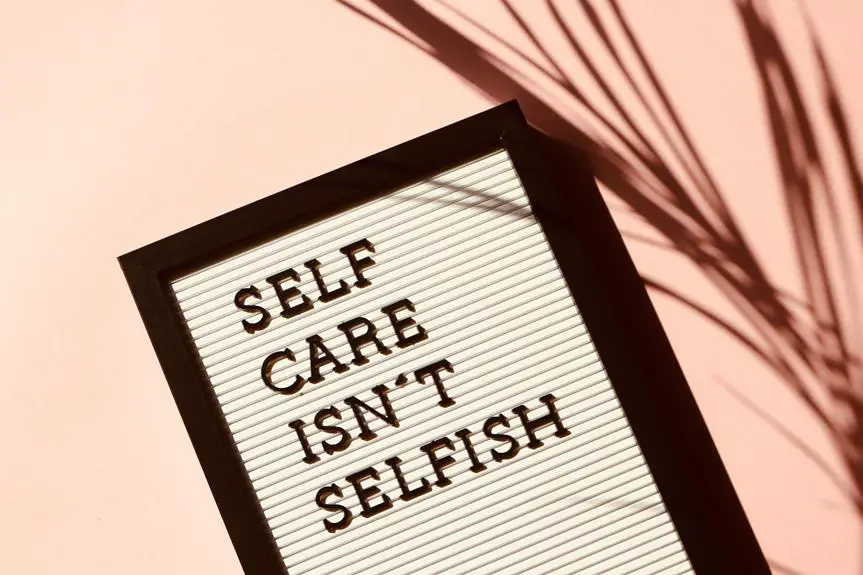When you reach for Batiste dry shampoo, it's essential to consider the potential allergens lurking in the ingredients. While it offers a quick fix for oily hair, its fragrances and preservatives can trigger reactions in sensitive individuals. You might experience symptoms like skin irritation or respiratory issues without realizing the source. So, how can you enjoy the convenience of dry shampoo while minimizing risks? There are practical steps you can take that could make a significant difference. Let's explore these options further.
Table of Contents
Overview of Batiste Ingredients
Batiste dry shampoo primarily contains starches and alcohol, which work together to absorb excess oil and refresh your hair. The starches, often derived from rice or corn, have a remarkable ability to soak up oil, leaving your hair looking clean and voluminous.
Meanwhile, alcohol plays a dual role; it helps to disperse the product evenly and quickly evaporates, ensuring your hair doesn't feel greasy after application.
In addition to starches and alcohol, Batiste includes propellant gases, which help deliver the product in a fine mist. This ensures even coverage, allowing you to target areas that need attention.
You'll also find fragrance in the formula, which provides a pleasant scent, masking any odors that may linger in your hair.
Moreover, Batiste features a few preservatives to maintain product integrity and extend shelf life. As you use it, keep in mind that the formulation may slightly vary between different scents or styles.
Always check the ingredient list on the can if you're concerned about specific components. Understanding these ingredients can help you make informed choices about using Batiste dry shampoo in your hair care routine.
Common Allergens in Hair Products
Many hair products, including dry shampoos, can contain common allergens that may irritate sensitive scalps or skin. If you're using Batiste or similar brands, it's essential to be aware of these potential irritants.
Fragrances are among the most common allergens found in hair products. They can trigger reactions in individuals with sensitivities, so always check the ingredient list if you're prone to allergies.
Another frequent culprit is preservatives like parabens and formaldehyde-releasing agents, which can cause skin irritation or allergic responses.
Additionally, some people might react to alcohols, especially those that are more drying. While they serve a purpose in product formulation, they can lead to discomfort for those with delicate skin.
Natural ingredients, such as essential oils, can also pose a risk, as many of them can provoke allergic reactions.
When trying a new product, it's a good idea to do a patch test. Apply a small amount on a discreet area of skin to see how your body reacts.
Being mindful of these common allergens can help you choose hair products that keep your hair looking great while protecting your skin.
Symptoms of Allergic Reactions
Allergic reactions to hair products can manifest in various ways, including itching, redness, and swelling on the scalp or skin. You might notice these symptoms shortly after applying a new product, like Batiste dry shampoo. In some cases, you could experience a burning sensation or stinging feeling, especially if the product comes into contact with broken skin.
Other signs of an allergic reaction may include hives or rash, which can appear as raised, red welts on your skin. If you develop difficulty breathing, wheezing, or tightness in your throat, seek medical attention immediately, as these symptoms could indicate a more severe reaction.
You might also experience a runny or stuffy nose, sneezing, or watery eyes if the allergen triggers a respiratory response. These symptoms can sometimes be mistaken for seasonal allergies, so it's essential to pay attention to when they occur.
If you suspect an allergic reaction to a hair product, it's crucial to stop using it and consult a healthcare professional for advice. Identifying the allergen can help you avoid similar products in the future and keep your hair care routine safe and enjoyable.
Tips for Safe Usage
When using Batiste, it's essential to prioritize your safety.
Start by performing a patch test to check for any allergic reactions, and always opt for hypoallergenic formulas if you're sensitive.
These simple steps can help ensure a better experience with your hair products.
Patch Test First
How can you ensure that a new product won't trigger your allergies?
Start with a patch test to assess your skin's reaction. This simple yet effective method helps you avoid potential irritation or allergic reactions before fully using the product. To perform a patch test, apply a small amount of the product to a discreet area of your skin, like the inside of your wrist or behind your ear.
After applying, wait 24 to 48 hours without washing the area. During this time, keep an eye out for any signs of redness, itching, or swelling. If you notice any adverse reactions, wash the area gently with soap and water and avoid using the product altogether.
Even if you don't experience any immediate reactions, it's wise to monitor your skin for the next few days. Sometimes, delayed reactions can occur.
Remember, everyone's skin reacts differently, so what works for someone else may not work for you. Taking the time to patch test can save you from discomfort and ensure that you can enjoy Batiste without worry.
Always prioritize your skin's health!
Choose Hypoallergenic Options
Choosing hypoallergenic options can significantly reduce the risk of triggering your allergies while enjoying Batiste products. When selecting a dry shampoo, look for labels indicating “hypoallergenic” or “sensitive skin.” These formulations typically contain fewer irritants and allergens, making them safer for your use.
Before you fully commit, try a patch test with the product on a small area of your skin. This simple step can help you gauge any potential reactions before applying it to your hair. If you notice any redness, itching, or irritation, it's best to avoid that product.
Also, consider checking the ingredient list. Avoid products with common allergens, such as fragrances, parabens, or sulfates. Opt for those with natural ingredients, as they're often gentler on the skin and less likely to cause adverse reactions.
Lastly, don't forget to consult with a dermatologist or allergist. They can provide tailored advice and recommend specific products that align best with your unique sensitivities.
Alternatives to Batiste
If Batiste isn't working for you due to allergies, there are plenty of natural dry shampoo options to explore.
You can also create your own DIY dry shampoo recipes with common household ingredients.
Let's look at some effective alternatives that can keep your hair looking fresh without the irritants.
Natural Dry Shampoo Options
Exploring natural dry shampoo options can help you find alternatives to Batiste that suit your needs and preferences. If you're sensitive to certain ingredients or looking for a more eco-friendly choice, consider these options:
- Cornstarch: This pantry staple absorbs oil effectively and can be easily applied with a brush or your fingers. It's lightweight and won't leave a heavy residue.
- Arrowroot Powder: Similar to cornstarch, arrowroot powder works wonders for oily hair. It blends well with various hair colors, so you won't have to worry about visible white residue.
- Cocoa Powder: If you have dark hair, cocoa powder can be a perfect match. It not only absorbs oil but also adds a hint of color, helping you maintain a natural look.
These natural alternatives can provide you with the freshness you desire without the potential allergens found in some commercial products.
Just remember to test a small amount first to ensure you don't have any adverse reactions. With these options, you can keep your hair looking clean and healthy while being mindful of your sensitivities.
DIY Dry Shampoo Recipes
Creating your own dry shampoo at home allows you to customize the ingredients and avoid potential allergens found in commercial products like Batiste. You can whip up simple recipes using everyday items, making it easy and budget-friendly.
One popular recipe combines cornstarch and cocoa powder. For light hair, mix ¼ cup of cornstarch with 1 tablespoon of cocoa powder. For dark hair, use ¼ cup of cornstarch and 2 tablespoons of cocoa powder. This blend absorbs oil while adding a hint of color.
Another option involves using arrowroot powder instead of cornstarch. Mix ¼ cup of arrowroot powder with 5-10 drops of your favorite essential oil for a pleasant scent. Shake it well before applying.
If you prefer a spray version, mix 1 tablespoon of cornstarch or arrowroot powder with 1 cup of water in a spray bottle. Add a few drops of essential oil, shake it up, and spray it onto your roots.
These DIY dry shampoos not only keep your hair fresh but also let you control what goes on your scalp. Enjoy experimenting with different ingredients to find your perfect blend!
Consulting With a Dermatologist
Consulting with a dermatologist can provide valuable insights into managing your allergies effectively. They can help you identify specific triggers and recommend appropriate treatments tailored to your skin type and sensitivities.
Here are three key reasons to schedule that appointment:
- Personalized Diagnosis: A dermatologist can conduct tests to pinpoint what's causing your allergic reactions. This can lead to more effective solutions and help you avoid potential irritants.
- Treatment Options: Whether it's topical treatments, oral medications, or lifestyle changes, your dermatologist will guide you through the best options to manage your allergies. They'll ensure that any products you use, including Batiste dry shampoo, are suitable for your skin.
- Ongoing Support: Allergies can change over time, and your dermatologist can monitor your condition and adjust your treatment plan as needed. Regular check-ins can ensure you stay on top of your skin health.
Don't underestimate the value of professional advice. By consulting with a dermatologist, you're taking a proactive step toward healthier skin and more effective allergy management. It's an investment in your overall well-being.
Frequently Asked Questions
Is Batiste Cruelty-Free or Vegan?
You're right to ask about Batiste's cruelty-free and vegan status. Batiste claims to be cruelty-free, but it's essential to check specific product labels, as formulations can vary and may contain non-vegan ingredients.
Can Batiste Be Used on Colored Hair?
Yes, you can use Batiste on colored hair. It helps refresh your style without stripping color. Just make sure to apply it gently, avoiding direct contact with your scalp to maintain vibrancy.
How Often Can I Use Batiste?
You can use Batiste dry shampoo as often as you need, but try to limit it to a few times a week. Overuse can lead to product buildup and may affect your scalp's health.
Does Batiste Expire?
Batiste doesn't have a strict expiration date, but it's best used within three years of purchase. Check the can for any signs of damage or unusual odors before using, and trust your instincts.
What Is the Best Way to Store Batiste?
To store Batiste, keep it in a cool, dry place away from direct sunlight. Make sure the cap's tightly closed to prevent leaks or contamination, ensuring it stays effective and lasts longer in your collection.
- How Does Ring Spun Cotton Affect Garment Fit and Shape Retention? - August 13, 2024
- What Are the Challenges in Producing Ring Spun Cotton? - August 13, 2024
- Is Ring Spun Cotton Suitable for Plus-Size Clothing? - August 13, 2024







